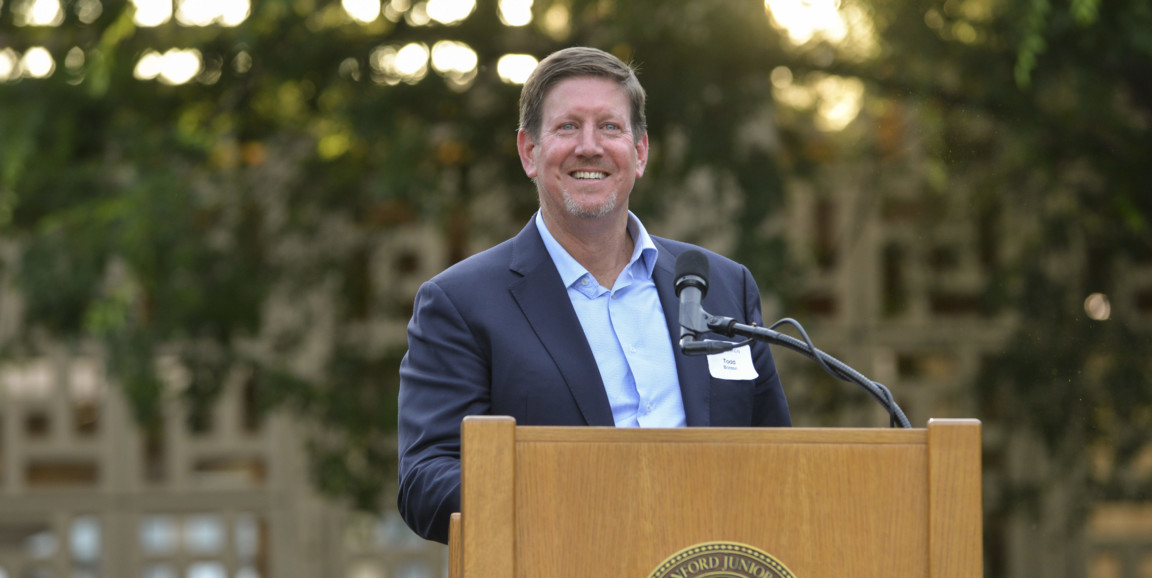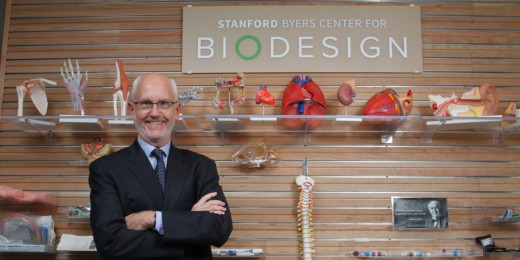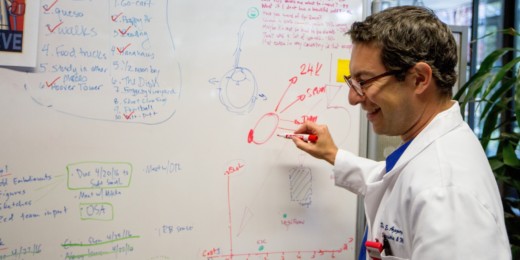As the director of the Stanford Biodesign Innovation Fellowship for the past 14 years, Todd Brinton, MD, trained 142 fellows and more than 1,000 graduate students, practiced interventional cardiology and worked as an innovator to improve patient care. As he prepares to leave Stanford, he shared some hard-won wisdom at the recent Biodesign graduation ceremony.
Value mentorship
"Great mentors have been the most significant force in my career," Brinton said. He described his first professional mentor, Tony DeMaria, the chief of cardiology at the University of California San Diego, who offered guidance when Brinton was a biomedical engineer.
"He was brilliant but extraordinarily demanding," Brinton said. "I remember taking slides to him -- the old kind that you clicked through using a slide projector with a carousel on the top -- one night in preparation for a talk the next day. It was 10:30 p.m., and he literally started tossing the slides out and telling me that everything was terrible. But he taught me how to tell a story."
Later, DeMaria encouraged Brinton, who was four years into his engineering career, to go to medical school. When it came time to apply for residency, Brinton told DeMaria that he was also interested in developing medical devices. "Go to Stanford," DeMaria advised, and he suggested that Brinton meet Paul Yock, MD, who had recently launched a program that would become the Stanford Byers Center for Biodesign.
Accept failure
Failure, Brinton said, is an unavoidable part of innovation: "You have to be able to accept it, learn from it, and get past it," he said. Although Brinton's first two start-up companies failed, each brought valuable lessons, as well as personal contacts who became key players in his future. His third start-up, Shockwave Medical, successfully commercialized a new treatment for cardiovascular disease that uses sonic pressure waves to clear calcified plaque.
Find a balance
It was sometimes a struggle to balance the tough demeanor needed to get fellowship trainees through a demanding curriculum with a desire to take friendlier approach, Brinton said.
"I must have been too nice that first year, because when it was time for the fellows to turn in their first big deliverable, I actually had one team tell me that they had decided that they weren't ready," he recounted.
Brinton adjusted, prioritizing getting the work done. Later, though, he realized there is a middle ground. "In these last few years, I've let my guard down and started enjoying the fellows more," he said, "and it has been wonderful."
Define your own path
It was "brutal" juggling the responsibilities of a clinician, innovator and teacher, Brinton said, but he believes the three roles informed and enriched each other.
"As a doctor, I know what it's like to care for patients and earn the trust of families," he said. "As an entrepreneur, I've learned to get comfortable with failure -- something you strive to avoid in medicine -- because most new ideas fail, and you have to keep looking for those few successes. And all of those experiences made me a better teacher."
Train the next generation
Brinton said he takes great pride in the accomplishments of the people he's trained. Among his trainees are the two alumni fellows who are the new co-directors of the Biodesign Innovation Fellowship, James Wall, MD, and Dan Azagury, MD.
"I spent an enormous amount of time with the fellows," Brinton said, "so when I look at where each one has gone and what they're doing, I'm incredibly proud."
Don't Be Afraid of a Challenge
Brinton, who is moving on to a senior leadership role at a large life sciences company in Irvine, California, said that leaving Stanford and the Bay Area was a very tough decision.
"But I've preached to the fellows for years not to be afraid of new challenges," he said, "and so I'm moving my family, leaving my practice and a start-up I've been working on for more than ten years, for the opportunity to impact millions of patients."
Photo of Todd Brinton by Rod Searcey






